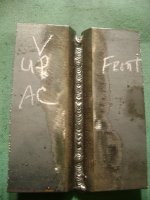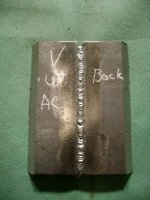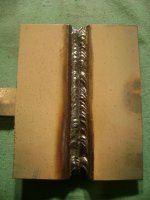I think an AC225 Lincoln (or equivalent AC only welder) will easily do all you plan for it. You were asking how thin they can weld: Lincoln rates the AC225 at 16 gauge (roughly 0.062 inches)and thicker metal. That said, it will take practice on the thin stuff to avoid burn through. AC power will run almost every common steel rod that DC will except for 6010 rod which is DC only. 6011 works very well on AC and performs similarly to 6010 so no problem just use the 6011 on the rusty steel. 6013, 7014, and 7018AC rods all work well too on AC power. Have not tried it yet, but I have read that Messer 80T AC is a dream rod for an AC power unit.
I have never used DC so I can not comment on it, but the experts claim DC is easier to use in out of position applications, and sometimes slightly easier to use on the thinner metals as you have the option of reversing the polarities with DC. That said, many projects have been built with AC only welders - it just takes a slightly different technique to get the job done. AC welders are darn near indestructable too and can be bought used so cheaply as they are much more common. Of course, if you find a deal on AC/DC then snatch it for the added capability of DC.
Also for a primitive backyard work shop (like mine) the AC arc welder can serve as more than just a welder and actually can become a true multi-purpose tool. How would you like to heat metal to bend it, loosen rusted nuts, braze, silver solder, and even improvise flame fill weld without owning an oxy/acetylene torch - never have to worry about storing explosive gasses, running out of gas when everywhere to get gas is closed, or pay the premium of simply buying the gas which is expensive. Add a twin carbon arc torch to your buzzbox arc welder and you can easily perform these functions by using cheap carbon rods which last a long time -the only real expense of using it is the electricity to feed the welder which is cheap compared to buying gas. A Twin carbon arc torch can be made for nearly free (or bought cheaply) and you have an intense flame needed to perform all these functions listed, but it WILL NOT cut metal so do not confuse a Twin carbon arc torch for the carbon gouging process which is totally different process. Twin carbon arc can actually burn up to 1000 degrees hotter than oxy acetleyne if desired. Believe it or not though, crude cutting of metal and piercing holes in metal can be done with the AC arc welder and the regular stinger by simply using 6011 rods (some soak the rods in water) and cranking up the amps to pierce holes and make crude cuts - instructions on how to do this can even be found in the Lincoln manual.
As you can see a simple AC buzzbox welder, can potentially add much more capability to a shop than just as a welding unit alone.
 Once I got passed the sound:confused2: I didn't see much difference from DC.
Once I got passed the sound:confused2: I didn't see much difference from DC. 

